If you are thinking about buying a home and thinking about a fixed-rate mortgage, it’s essential to understand the basics. A fixed-rate mortgage means the interest rate remains constant throughout the loan term. This offers predictability in your monthly payments. Let’s simplify the key points of fixed-rate mortgages to assist you in making well-informed decisions when dealing with home financing.
What is a Fixed-Rate Mortgage?
A fixed-rate mortgage has the same interest rate for the entire loan period. This means borrowers know how much they will pay each month.
In contrast, adjustable-rate mortgages have interest rates that can change. Fixed-rate mortgages give borrowers a stable payment because the interest rate is set when the loan begins and does not change. This predictability helps borrowers budget without unexpected payment increases.
Homeowners find comfort in the security and stability of fixed-rate mortgages. They can plan their finances confidently throughout the loan term.
How Fixed-Rate Mortgages Work
A fixed-rate mortgage has a constant interest rate for the entire loan term. Borrowers know exactly how much they need to pay each month. The interest rate is set at the start of the mortgage and does not change until the loan is fully repaid.
The monthly payment for a fixed-rate mortgage is determined by the loan amount, interest rate, and term. These factors help calculate a fixed amount due each month. This consistency helps borrowers plan their budgets effectively.
If interest rates decrease, borrowers can refinance to benefit from lower rates. Refinancing means replacing the original mortgage with a new one at a lower interest rate. This can lead to lower monthly payments and savings. However, it’s important to carefully consider individual financial goals before deciding to refinance.
Advantages and Disadvantages of Fixed-Rate Mortgages
Fixed-rate mortgages have a consistent interest rate throughout the loan term, making monthly payments stable and predictable. This stability protects borrowers from sudden increases due to rising interest rates, ensuring financial security. However, these mortgages may offer less flexibility when rates drop, unlike adjustable-rate mortgages.
Compared to other options, fixed-rate mortgages are known for their stability, shielding borrowers from interest rate changes and offering a steady payment structure. This stability is especially helpful during economic downturns when rates decrease, allowing holders to keep the same rate and potentially save on monthly payments compared to variable-rate options.
Fixed-Rate vs. Adjustable-Rate Mortgages
Fixed-rate mortgages have a constant interest rate throughout the loan term, giving borrowers stability and predictability in their monthly payments. On the other hand, adjustable-rate mortgages (ARMs) have variable interest rates that can change based on market trends, potentially causing payment increases.
Comparing the interest rate between a fixed-rate mortgage and an ARM, fixed-rate mortgages do not change with market shifts unless refinanced. ARMs may have lower initial rates but can result in higher payments later on. It’s important to consider factors such as personal finances, economic conditions, and future income growth when choosing between the two.
Borrowers should analyze different payment scenarios, especially with ARMs, to ensure affordability. This includes understanding potential rate adjustments and payment caps to avoid financial strain down the road.
How Would an Economic Slump Affect My Fixed-Rate Mortgage?
During an economic slump, the interest rates on a fixed-rate mortgage typically stay the same. This provides stability for borrowers. However, the property value securing the mortgage may change due to market conditions. This can affect the borrower’s equity.
In an economic recession, borrowers might have difficulty making payments on a fixed-rate mortgage if their financial situation worsens. It’s important for borrowers to evaluate their financial stability. They should also have a backup plan to ensure they can keep up with their mortgage payments during tough economic times.
Talking to a financial advisor can provide helpful advice on managing mortgage payments well in economic downturns.
Why Choose a Fixed-Rate Over an Adjustable-Rate Mortgage?
Fixed-rate mortgages have a constant interest rate for the entire loan term. This stability helps homeowners plan their budgets and avoid unexpected payment increases.
When choosing between fixed-rate and adjustable-rate mortgages, consider your financial situation and economic conditions.
Fixed-rate mortgages provide predictability and security because monthly payments stay the same. In contrast, adjustable-rate mortgages can lead to fluctuating payments as interest rates change, causing unexpected increases.
Opting for a fixed-rate mortgage allows homeowners to better budget and plan for long-term housing costs without worrying about sudden payment shocks.
Fixed-rate amortized vs. Non-Amortized Mortgages
A fixed-rate amortized mortgage has the same interest rate for the entire loan term. This provides stability and predictability in monthly payments.
In contrast, a non-amortized mortgage doesn’t involve gradual repayment of the principal loan amount along with interest. This leads to different payment structures.
With a fixed-rate amortized mortgage, borrowers make regular payments covering both interest and principal. This helps them slowly pay off the loan balance over time.
On the other hand, a non-amortized mortgage might need interest-only payments for a while. Later, the borrower might have to make a balloon payment for the full loan amount.
These different payment structures affect the total amount paid over the loan’s life and the borrower’s financial planning.
When choosing between these mortgage options, individuals should think about their financial goals and preferences carefully.
What is a 5/5 ARM?
A 5/5 ARM, also known as a 5/5 adjustable-rate mortgage, is different from regular fixed-rate mortgages in several ways.
-
In a 5/5 ARM, the interest rate stays the same for the first five years. This means your monthly payments will be consistent initially.
-
After the first five years, the interest rate can change every five years. This adjustment is based on market conditions, leading to potential fluctuations in monthly payments.
In contrast, a fixed-rate mortgage keeps the same interest rate for the entire loan term, giving you stable and predictable payments throughout.
When deciding whether a 5/5 ARM is right for you, there are pros and cons to consider:
-
The lower initial interest rate of a 5/5 ARM can mean lower initial payments compared to fixed-rate mortgages, which might be appealing if you’re looking for more affordable payments at the start.
-
However, there’s a risk of future payment increases when the interest rate adjusts, especially if market conditions lead to higher rates.
It’s crucial to carefully assess your financial situation, thinking about factors like your future income potential and the stability of long-term payments when choosing between a 5/5 ARM and other mortgage options.
What is a Hybrid ARM?
A Hybrid ARM is a type of adjustable-rate mortgage that combines elements of fixed-rate and adjustable-rate mortgages. Unlike traditional fixed-rate mortgages that maintain a consistent interest rate for the entire loan term, a Hybrid ARM starts with an initial fixed interest rate period, typically ranging from three to ten years.
After this initial period, the interest rate on a Hybrid ARM can adjust periodically based on market conditions, potentially resulting in higher or lower monthly payments for borrowers.
Compared to traditional fixed-rate mortgages, Hybrid ARMs offer lower initial interest rates during the fixed-rate period, allowing borrowers to benefit from potentially lower monthly payments at the beginning of the loan. However, once the fixed-rate period ends, the interest rate on a Hybrid ARM can fluctuate, leading to changes in monthly payments that may not be predictable.
Typical characteristics of a Hybrid ARM loan include an initial fixed-rate period, an adjustment period when the interest rate can change, predetermined adjustment intervals, and caps on how much the interest rate can increase or decrease during each adjustment period. Borrowers considering a Hybrid ARM should carefully evaluate their financial situation, future income expectations, and risk tolerance to determine if this type of mortgage aligns with their needs and goals.
What is an Interest-Only Mortgage?
Interest-only mortgages are different from traditional mortgages. In traditional mortgages, borrowers pay both principal and interest. With interest-only mortgages, borrowers only pay the interest for a set period, usually five to ten years. After this period, borrowers start repaying the principal, leading to higher monthly payments.
Interest-only mortgages offer lower initial payments, making them attractive for maximizing cash flow. However, they also come with risks. While the lower initial payments allow funds to be used elsewhere, there’s the risk of higher monthly payments when the principal repayment period starts. Borrowers must be financially prepared for this increase.
Another risk is the possibility of not building equity in the property during the interest-only period, which might affect future refinancing or selling options. Borrowers need to carefully consider the benefits and risks to see if an interest-only mortgage fits their financial goals and situation.
FAQ
What is a fixed-rate mortgage?
A fixed rate mortgage is a type of home loan where the interest rate remains the same for the entire term of the loan, providing consistent monthly payments. For example, a 30-year fixed rate mortgage will have the same interest rate for 30 years.
How does a fixed-rate mortgage differ from an adjustable-rate mortgage?
A fixed rate mortgage has a set interest rate for the entire loan term, providing consistent monthly payments. An adjustable rate mortgage, or ARM, has an interest rate that can change periodically, affecting monthly payments.
What are the pros and cons of a fixed-rate mortgage?
Pros of a fixed rate mortgage include stable monthly payments and protection against rising interest rates. However, cons may include higher initial interest rates compared to adjustable rate mortgages.
How is the interest rate determined for a fixed-rate mortgage?
The interest rate for a fixed rate mortgage is determined by factors such as the current market rates, the borrower’s credit score, loan amount, and loan term. Lenders may also consider economic indicators like inflation.
Can I refinance a fixed-rate mortgage?
Yes, you can refinance a fixed-rate mortgage. By refinancing, you may be able to secure a lower interest rate, reduce your monthly payments, or adjust the term of your loan. Make sure to compare rates from different lenders to find the best option for your financial goals.
Simplify the basics of fixed-rate mortgages with Champions Mortgage. Learn how these mortgages lock in a constant interest rate for the life of the loan, providing predictable monthly payments and financial stability. Contact us today to discover how a fixed-rate mortgage can benefit your homebuying journey.







